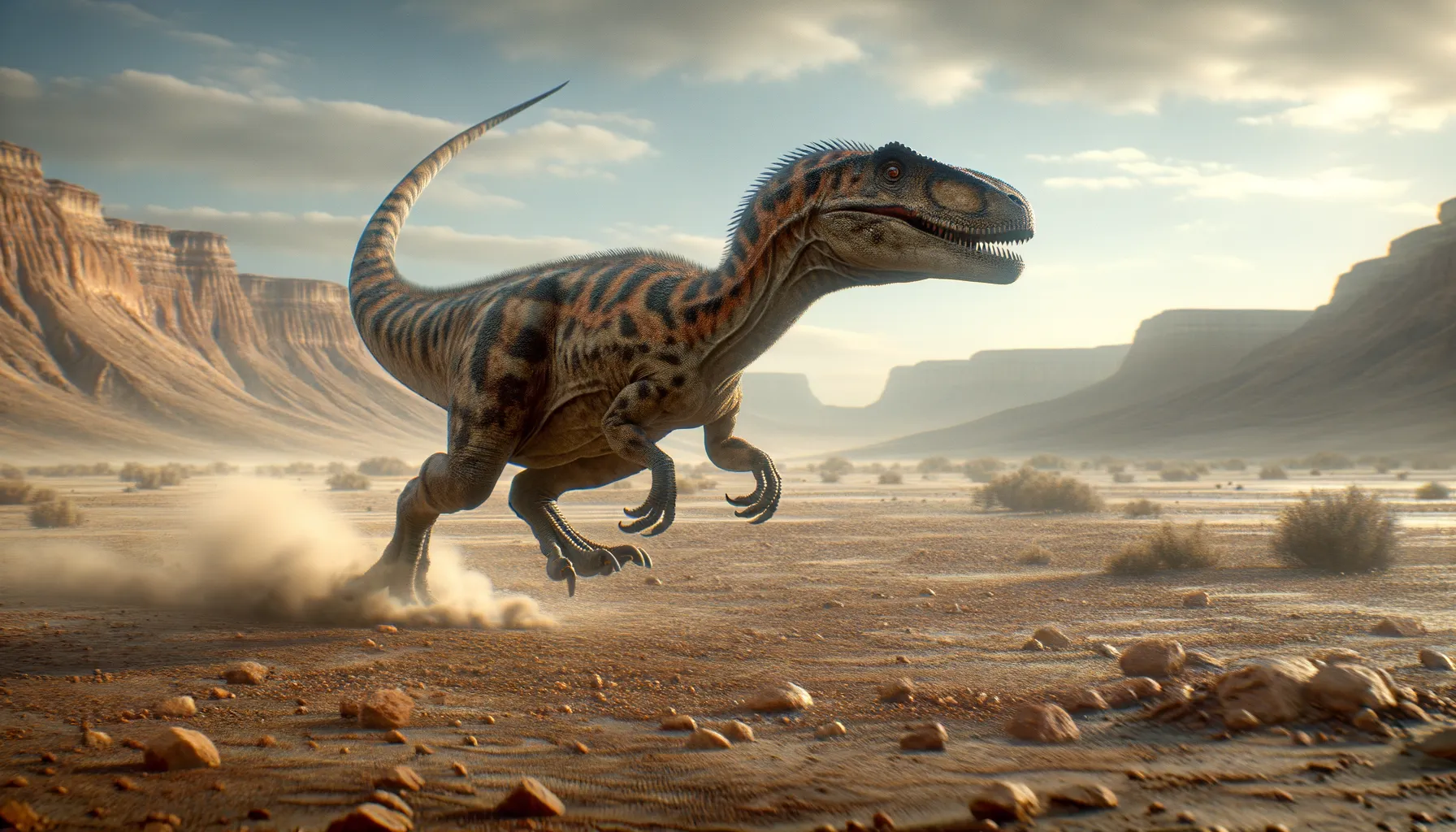
Hexing
A swift hunter of the Cretaceous era.
Period
Cretaceous
Length
Roughly 1 meter long.
Height
Approximately 0.3 meters tall.
Weight
Around 1 kilogram.
Hexing was a small theropod dinosaur that lived during the Late Cretaceous period. Known for its lightweight build, it was an agile predator that likely relied on its speed and quick reflexes to capture small prey. This dinosaur was found in Asia, with fossil evidence primarily emerging from parts of the Gobi Desert. Its discovery has provided significant insights into the diversity of theropods during the Cretaceous period.
Diet
Hexing was likely carnivorous, feeding predominantly on small vertebrates and insects. Its sharp teeth and agile build suggest that it was capable of capturing quick and elusive prey.
Hunting
As a small predator, Hexing relied on its speed and agility to hunt. It might have employed surprise tactics, using the environment to creep close to its prey before launching a swift attack.
Environmental challenges
Hexing faced numerous environmental challenges, such as finding food in fluctuating climates and avoiding larger predators. The arid conditions of its habitat meant that water could be scarce, requiring it to adapt to long periods without hydration. Seasonal changes might have also affected prey availability, pushing Hexing to be resourceful in its hunting strategies.
Speed
Likely swift for short distances.
Lifespan
Estimated around 10-15 years.
First discovery
Discovered in the Gobi Desert, 2012.
Fun Facts
- Hexing is a small dinosaur that lived about 130 million years ago during the Early Cretaceous period.
- Its name, Hexing, means 'god of the river' in Chinese, which reflects its discovery in China.
- Hexing was a feathered dinosaur, suggesting it might have been warm-blooded like birds.
- Despite its small size, Hexing had long legs, possibly making it quite fast for its time.
- The discovery of Hexing helped scientists understand more about the evolution of small theropods.
- Hexing belonged to the group known as theropods, which also includes the mighty Tyrannosaurus rex.
- Its fossils were found in the Yixian Formation, a famous fossil site in northeastern China.
Growth and Development
Hexing grew quickly to reach reproductive maturity, likely within a few years, which was crucial for survival in its volatile environment. Its rapid development was supported by a fast metabolism, a trait common in many small theropods. Juveniles would have required protection either from parents or the environment to survive the early stages of life.
Habitat
Hexing inhabited arid regions of the Gobi Desert, where fluctuating temperatures and scarce vegetation were common. Open plains and few natural shelters characterized the landscape, necessitating strategic nesting and foraging. Despite these challenges, its habitat harbored diverse life, offering ample learning opportunities.
Interaction with other species
Hexing would have shared its habitat with both predators and prey, each presenting their own challenges and opportunities. While competing with other carnivores, it avoided larger predatory dinosaurs, and interacted with different species by preying on smaller or weaker animals. Coexistence with herbivores was possible during non-competitive interactions as both searched for sustenance.
Natural lifespan
Hexing had a natural lifespan of around 10 to 15 years.
Reproduction
Hexing likely laid small, clutched eggs in nests camouflaged from predators. Parental care might have been significantly invested in ensuring offspring survival in its challenging habitat. Both parents may have played roles in incubating and protecting the young until they gained independence. Nest building and selection were probably strategic, ensuring optimal survival.
Social behaviour
Social behavior in Hexing is largely speculative, though solitary living or small group dynamics are possible. Networking with conspecifics during breeding seasons might lead to temporary pairing or group formations. Communicative behaviors to facilitate hunting or establishing territory would've offered survival advantages. Cooperative interactions might structure groups during resource-rich periods.
Fossil locations
Hexing fossils were primarily discovered in the Gobi Desert in China. The arid conditions of its fossil sites have preserved numerous specimens, offering a detailed glimpse into its biological and ecological framework. Excavations in these areas have increased our scientific understanding of small theropods during the Late Cretaceous period.
